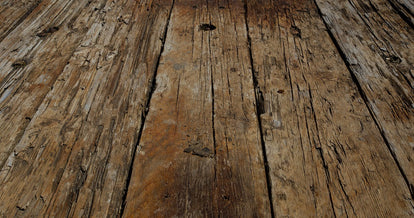
Dry Rot FAQs
Posted on 05 July, 2021
Dry rot ranks among the more common of property problems, but it’s also one that has the potential to cause serious destruction and structural damage if left untreated or perhaps even not picked up on at all. To make sure that you’re all clued up on what to look for out for and how to deal with any underlying rot issues, our BC Profiles team have compiled a concise list of dry rot FAQs.
What is dry rot?
Dry rot, also known as brown rot or by the name ‘Serpula Lacrymans’, is a wood-decaying fungus that’s found right across the world.
The fungus originally affected dead trees in forest environments, however, given the population spread of humanity and our penchant for using timber in our homes, it’s grown to infect the structures in which we live, with dry rot problems able to be dated as far back as the 18th century.
Dry rot breaks down the cellulose and hemicellulose in wood, the components which give the material its strength and durability, which in turn leaves the timber weak and brittle. You’ll find dry rot occurs in timber which reads moisture levels above 20%.
What are the causes of dry rot?
As we’ve mentioned above, dry rot thrives in timber with moisture levels in excess of 20%. Spores are produced by the fungus, which are then spread throughout the air before landing on and germinating the wood. The source of the fungus can usually be attributed to:
- Humidity – the location of the timber is in an area of your home that is exposed to excessive humidity and condensation.
- Treatment – the wood may not have been kiln-dried to lower its moisture levels below 20% before being used in the construction of your home.
- Contact with water – the timber may have come into contact with large volumes of water, this is usually the result of loose guttering or damaged plumbing and waste pipes.
What is the difference between dry rot and wet rot?
Though both are types of fungal decay that affect the timber in your home, dry rot is considered more unique (and more destructive) than wet rot thanks to its ability to spread from the original site of germination.
It’s able to travel in spores through the air as well as through the masonry and brickwork before landing and feeding on your home’s timber. If left untreated, dry rot will continue to feed on any timber-work found in your home until structural integrity is completely compromised and the wood has practically been disintegrated.
What are the signs of dry rot?
If you’re concerned you may have dry rot within your home, you should keep an eye out for any of the following signs appearing:
- Cracking on the skirting or facing timbers of your home.
- Changes in the wood such as being cracked, darkened or shrunken in appearance.
- A musty, damp aroma.
- A cotton wool-like mycelium may develop on the surface of the timber.
- A grey, fungus coloured skin may develop on the wood.
- Spores in the affected area, these are rust-red coloured.
Should you spot any of these signs, we recommend seeking the help of a professional and obtaining a full survey to assess whether the damage is caused by dry rot. If you do have a dry rot problem, it’s recommended that you take action and undergo any necessary dry rot treatment immediately.
Dry rot treatment
It’s always recommended that you employ the help of a qualified professional to deal with dry rot, the extent of the damage able to be caused by the fungus should not be underestimated and, if not treated properly, it will continue to affect your property’s timber.
Dry rot treatment includes:
- Identifying the rot fungus and assessing the type and scale of any damage.
- Finding and dealing with the source of excess moisture.
- Repairing and replacing any damaged timber and masonry.
- Removing any fabric and plaster that has been affected by dry rot.
- Applying fungicidal treatment and wood treatments to affected areas of masonry and timber to prevent the return of dry rot.
Looking to get the lowdown on wet rot too? Check out our BC Profiles Wet Rot FAQs and explore the library of trusted information available from our Help & Advice page. You’ll also find a helpful guide on How To Treat Woodworm too.